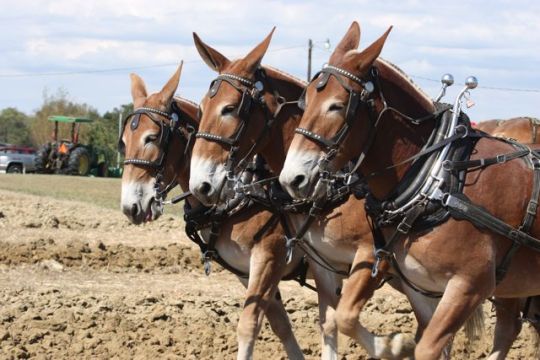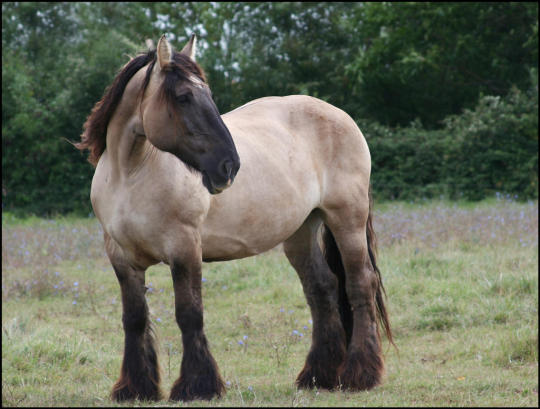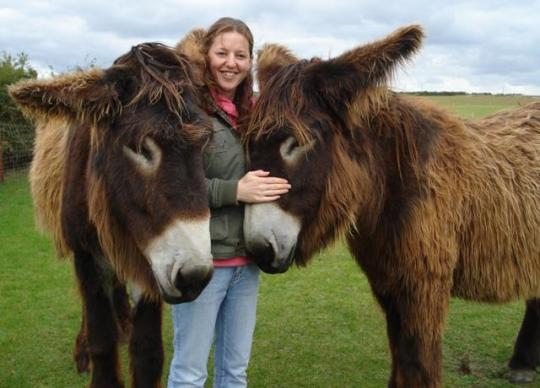#trait poitevin mulassier
Text
The other day, I went down the rabbit hole of "cute donkeys" and came up with my head full of things I didn't know about mules (the hybrid offspring of a horse and a donkey), and why they were once so coveted as work animals.
Brace for info dump, while enjoying this lovely photo of a trio of draft mules.

The explanation is hybrid vigour (when hybrid offspring have enhanced traits compared to its parents):
Mules are stronger, hardier, healthier, have better endurance, harder hooves, sturdier skin and can handle extreme weather better than horses or donkeys. They are also more patient, more intelligent, and easier to handle than either of their parent species. Horses may be faster, but that's about the single thing they're better at than a mule of the same size.
So mules, being all around nicer to work with and getting you more work for the same amount of feed, and with less hassle, were preferred for just about every job purpose.
Habby du Magnou, a Poitevin Mulassier mare, and her daughter Lady du Magnou, a rare Poitevin mule

But since horses have 64 chromosomes and donkeys have 62, mules end up with 63 chromosomes, which means they are almost invariably sterile. That's because biology gets very confused when trying to split an uneven number of chromosomes neatly in half to create germ cells. There are a few documented exceptions of fertile mule mares (never stallions), but they are very, very rare. So you have to keep crossbreeding the two parent species to produce them, usually by breeding a donkey sire (jack) to a horse dam (mare). This is because it's easier for a 32 chromosome egg to incorporate a 31 chromosome sperm into a viable zygote (fertilised egg) than vice versa.
Because of this, there was (and still is) in France a breed of absolutely massive draft horses, the Poitevin Mulassier, and a breed of big-ass donkeys (pun intended, but honestly they're arguably the largest donkeys in the world, and shaggy like Highland cattle), the Baudet du Poitou, two breeds whose main purpose was to breed the enormous and super-strong Poitevin mule.
The Poitevin mule



This absolute unit was the must-have work-animal for all kinds of farm and industrial work for centuries, and a significant French export, until mechanisation made these magnificent creatures obsolete.
With no demand for the Poitevin mule , its parent breeds dwindled, almost to the brink of extinction. Determined conservation efforts during the last few decades are slowly bringing their numbers back up, but they're very far from their heyday, when some 20,000 Poitevin mules were born annually.
The Poitevin Mulassier



Both the parent breeds are still endangered, which means most of the current effort is directed into bringing up the numbers of Poitevin horses and Poitou donkeys. This means breeding horses to horses and donkeys to donkeys, with very few breeding opportunities allowed to produce the Poitevin mule. Only about 20 of those are born each year.
The Baudet du Poitou



#mules#poitevin mule#mule poitevine#donkeys#baudet du poitou#poitou donkey#horses#draft horse#poitevin mulassier#trait poitevin#trait poitevin mulassier
38K notes
·
View notes
Photo


Baikal - Trait Poitevin Mulassier
The Pixel Nomad & Vor-die-Linse • Fotografie
140 notes
·
View notes